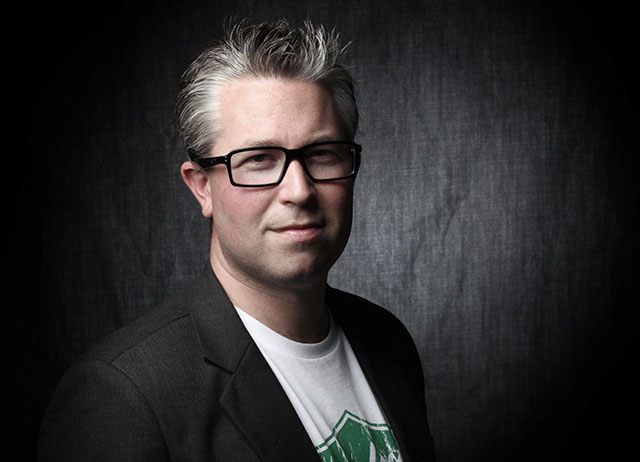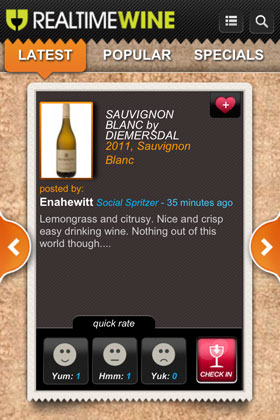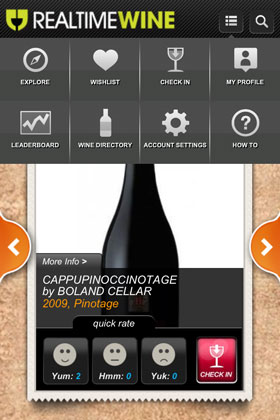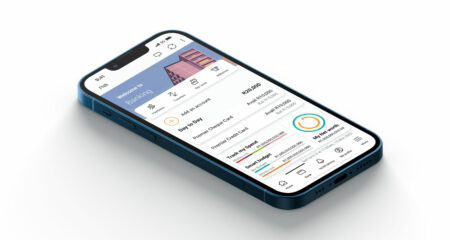
Real Time Wine founder Andy Hadfield has had a varied career. He’s worked for a major bank, a digital agency, and as a digital consultant and public speaker. Now he’s trying his hand at an application that he hopes will sidestep the elitism often associated with wine reviews and provide an informative platform for casual wine drinkers to find new wines and talk about old favourites.
Before he started consulting and speaking, Hadfield was at First National Bank for two-and-a-half years, working on its online banking platform. Prior to his stint in banking, he spent five years at digital agency The Virtual Works.
Real Time Wine isn’t Hadfield’s first start-up. In 1999, he started an online youth community called Gal (Get a Life) that saw more than 1m page impressions a month at its peak.
Real Time Wine started as a hobby when he began tweeting wine reviews and encouraging others to do so. He would then aggregate the tweets to a blog. The number of tweets suggested to him there might be a business to be had from the model and the idea for the Real Time Wine app was born.
Hadfield raised funding for the service, won the Tech for Africa conference’s “Ignite” competition and went into development with the service in February. The app runs on Android and iOS, and users of other handsets can visit the Real Time Wine website from their device.
 Hadfield says developing native apps for every platform is prohibitively expensive. “If you go the native app approach, you’re looking at around R500 000 per platform. US start-ups with $1m of funding can do that, be we don’t have that luxury.”
Hadfield says developing native apps for every platform is prohibitively expensive. “If you go the native app approach, you’re looking at around R500 000 per platform. US start-ups with $1m of funding can do that, be we don’t have that luxury.”
Because he wanted to make the service available to Android, iOS and BlackBerry devices, Hadfield says the most sensible approach turned out to be a Web-based one. He says he decided not to go the HTML5 route because many older smartphones don’t support it.
“Instead, we built the service using HTML4, CSS3 and JQuery to give it an app-like appearance in the mobile browser. It’s way more backwards compatible, meaning we can reach between half and two-thirds of the estimated 8m smartphones in SA. We use ‘app wrappers’ that wrap the mobile site with an app-like experience into an icon you can download.”
Hadfield says many start-ups require a partnership between a business or product-focused founder and a technically focused one who “lock themselves in a garage for six months and come out with a start-up”.
“I have two kids and a corporate warrior wife. I can’t earn nothing for a year,” Hadfield says. “Also, I never found a technical co-founder.” Instead, Hadfield chose to use an agency — Prezence Digital — for the development process.
The downside of this approach, according to Hadfield, is the comparative lack of flexibility because agencies are process driven. “But this is one of the benefits, too. You get a structured development process — wireframes, usability, user testing and so on — that you don’t often get in start-up mode. Also, you get a massive team rather than one person.”
 Real Time Wine’s first investor was banker and wine aficionado Michael Jordaan, who led the first investment round. Jordaan was followed by Mike Ratcliffe, owner of the Warwick and Vilafonte wine estates. “Mike is one of the best wine marketers in the country,” says Hadfield. “Most wine industry people are farmers, not marketers, but Mike is a business guy.”
Real Time Wine’s first investor was banker and wine aficionado Michael Jordaan, who led the first investment round. Jordaan was followed by Mike Ratcliffe, owner of the Warwick and Vilafonte wine estates. “Mike is one of the best wine marketers in the country,” says Hadfield. “Most wine industry people are farmers, not marketers, but Mike is a business guy.”
The two early investors asked that Hadfield involve investment company Angel Hub to manage their investments. “It’s slightly different to how [Angel Hub] would usually operate. It’s normally involved in fundraising, but here it’s more of a management partner.”
Hadfield also roped in an old friend, Josh Adler from Prefix Technologies, as an adviser.
Real Time Wine hopes to make money in a number of ways. Hadfield says the service is “primarily a data business” and that he’s not particularly interested in the e-commerce side of wine, where apps or sites are used to sell wine.
“If you look internationally — which is where we’re heading — there’s a ton of competition in that space already. Where we focus is on the experience you have with wine, whether it’s at a supermarket trying to choose it, or at a table at home or in a restaurant. We’re trying to get sample sets of wine drinkers that show which wines people are drinking, where, how often, and a sentiment analysis using keywords.”
Hadfield says this sort of data is “theoretically powerful” when applied to a retail context. He says there are also plans to use the game layer of the app (users earn points for using the service to rate wines) to allow for the promotion of products.
“We’re looking at geo-located retail specials,” Hadfield explains. “Supermarket buying is a ‘derive-demand’ process. About 80% of SA wine is bought from a supermarket and 80% of that is consumed within 24 hours. Wine in SA is bought on demand, so it can be hard to predict demand.”
Retailers will be able to pay to have their specials appear on the service, but users can also upload images or information on wines they may have, for example, seen on special in a local retailer. This information then becomes available to other users in the vicinity.
There’s also the option of “promotions linked to experiences”, which Hadfield likens to the “Golden Tickets” in Roald Dahl’s book, Charlie and the Chocolate Factory. “Someone will pay to distribute golden tickets linked to certain wines in certain geographic areas. For example, if you buy a Nederburg wine in Cape Town and rate it or otherwise interact with it using the application you could unlock a private tasting at Nederburg, paid for by them.”
He says the biggest wine sites in SA get about 50 000 hits a month and Real Time Wine is aiming for a similar target. The next update to the service will also make it applicable to international audiences and use geo-location data to deliver applicable information to users based on their region.
Real Time Wine launched on Wednesday last week. Since then it’s signed up more than 550 users. “That’s pretty good if you look at the number of SA smartphone users, how many of them are app users, and how many of those are wine fans,” Hadfield says. — (c) 2012 NewsCentral Media




